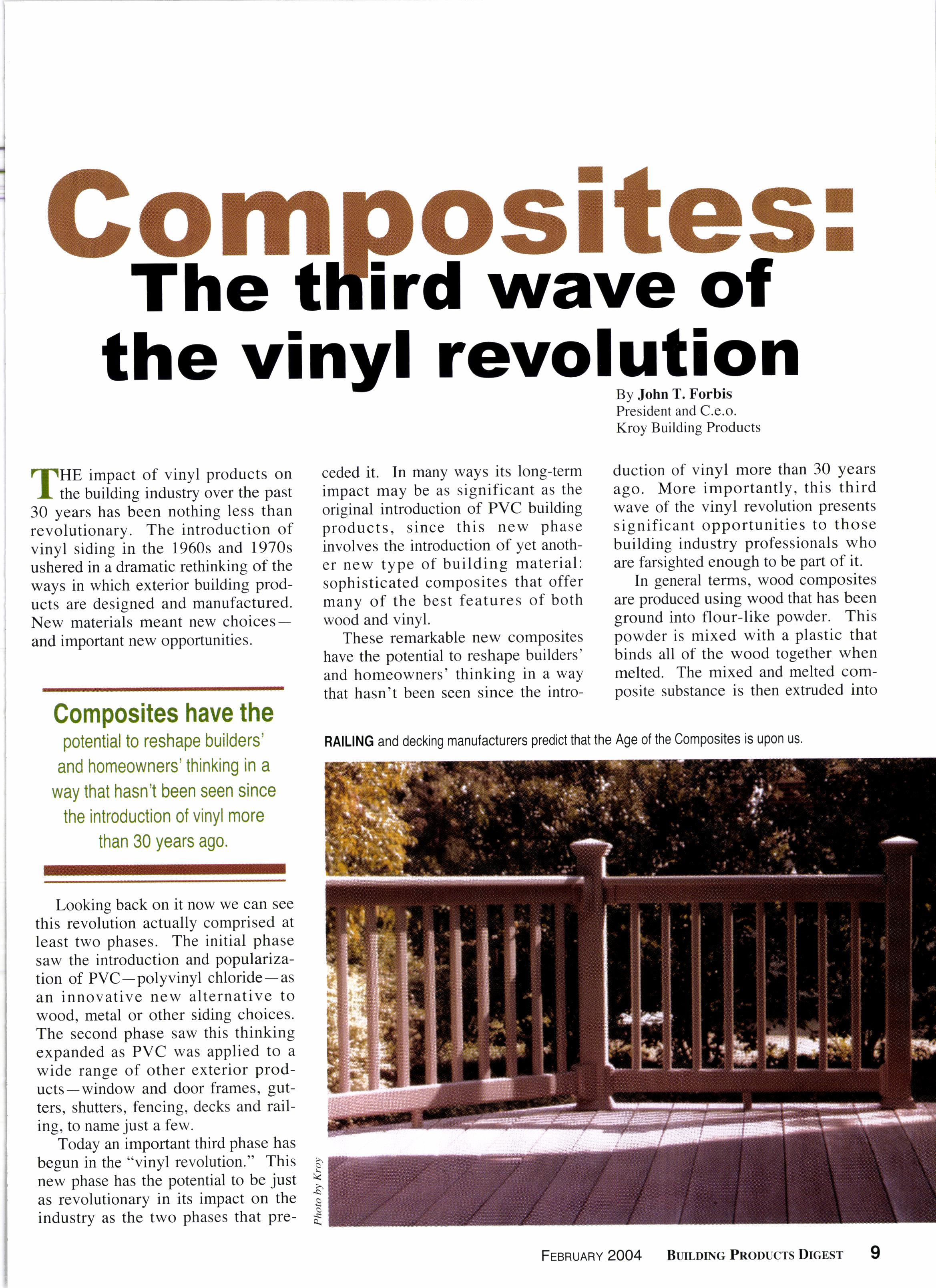
1 minute read
Gomposltest The tllird wave of the vinyl revolution
By John T. Forbis President and C.e.o. Kroy Building Products
rTIHE impact of vinyl products on I the building industry over the past 30 years has been nothing less than revolutionary. The introduction of vinyl siding in the 1960s and 1970s ushered in a dramatic rethinking of the ways in which exterior building products are designed and manufactured. New materials meant new choicesand important new opportunities.
Composites have the
potential to reshape builders' and homeowners'thinking in a way that hasn't been seen since the introduction of vinyl more than 30 years ago.
Looking back on it now we can see this revolution actually comprised at least two phases. The initial phase saw the introduction and popularization of PVC-polyvinyl chloride-as an innovative new alternative to wood, metal or other siding choices. The second phase saw this thinking expanded as PVC was applied to a wide range of other exterior Products-window and door frames, gutters, shutters, fencing, decks and railing, to name just a few.
Today an important third Phase has begun in the "vinyl revolution." This new phase has the potential to be just as revolutionary in its impact on the industry as the two phases that pre- ceded it. In many ways its long-term impact may be as significant as the original introduction of PVC building products, since this new Phase involves the introduction of yet another new type of building material: sophisticated composites that offer many of the best features of both wood and vinyl.
These remarkable new composites have the potential to reshape builders' and homeowners' thinking in a waY that hasn't been seen since the intro- duction of vinyl more than 30 years ago. More importantly, this third wave of the vinyl revolution presents significant opportunities to those building industry professionals who are farsighted enough to be part of it.
In general terms, wood composites are produced using wood that has been ground into flour-like powder. This powder is mixed with a plastic that binds all of the wood together when melted. The mixed and melted composite substance is then extruded into components with various dimensions.
Wood composites offer many important advantages over either traditional wood or all-vinyl components. Like pure PVC components, they will not split, splinter, rust, rot or corrode, and never need scraping, sanding or painting-advantages which made vinyl such a hit with maintenanceweary homeowners. Composites are also unaffected by termites or other wood-boring insects, and have added










